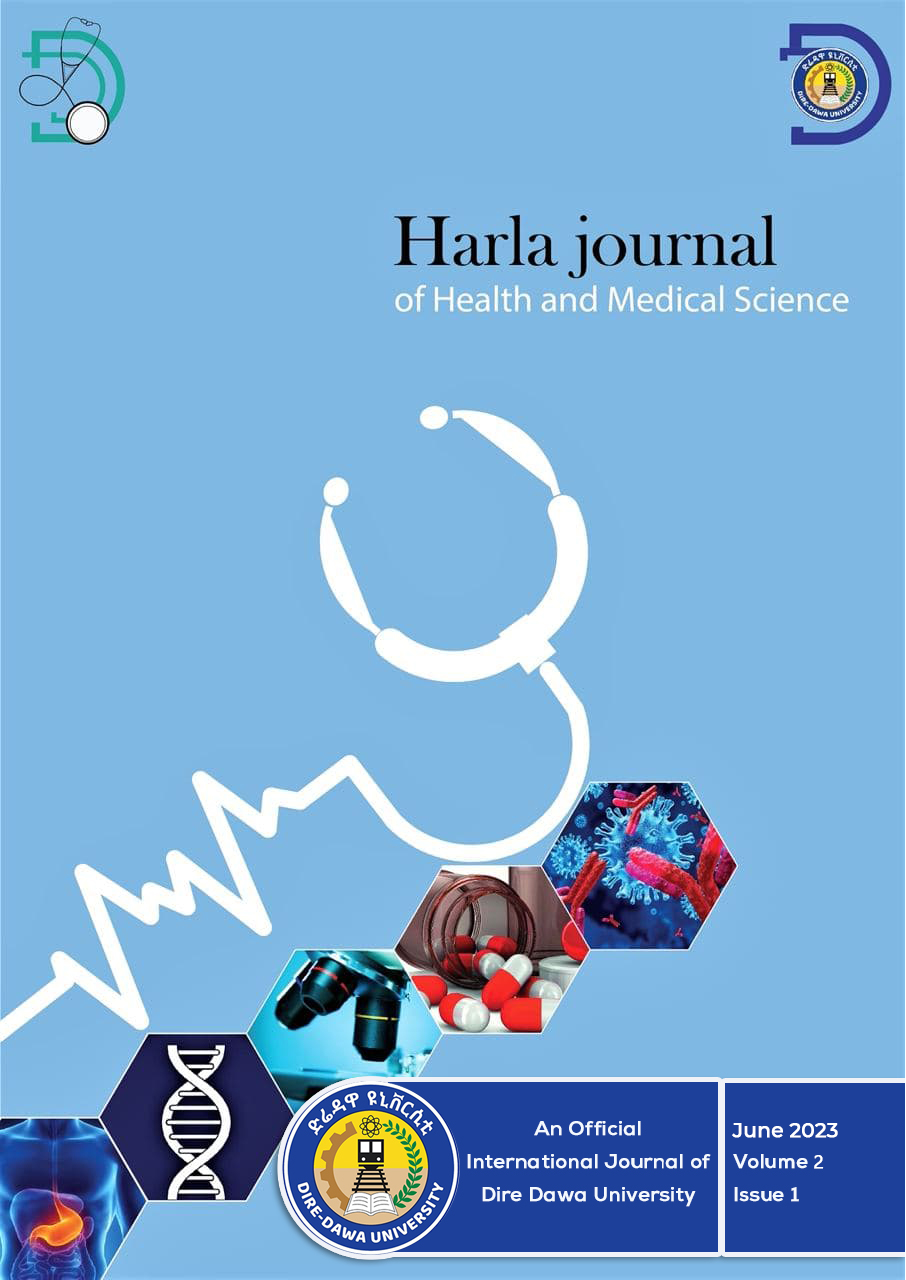Index case partner and family HIV testing and associated factors at public health facilities in Dire Dawa City Administration, Eastern Ethiopia
DOI:
https://doi.org/10.20372/hjhms.v2i1.139Keywords:
Partner, family, Index Case Test, HIV/AIDS, EthiopiaAbstract
Background: HIV/AIDS continue to kill people and cause morbidity around the world. In Ethiopia an estimated a significant number of people with HIV infection remain undiagnosed, despite the massive increase of HIV testing services (HTS). Everyone who has been exposed to HIV by the index case will be offered an HIV test as part of index testing. This study was aimed to assess the proportion and associated factors of partner and family-based HIV testing among patient on ART at Public health facilities in Dire Dawa city, Ethiopia.
Method: Facility based cross sectional study design using quantitative data collection was conducted from May, 1- 30, 2023. A total of 389 study people living on ART were selected using systematic random sampling techniques using unique ART number. Structured questionnaire was used for the data collection. The questionnaire was developed on Kobo tool- box platform. The data was exported to and analyzed using SPSS version 27.
Result: A total of 389 index cases were participated in this study with a response rate of 99.2%. The mean age (±SD) was 34.57 (±6.82) years. Among the respondents’ partner and children, 323 and 183 respectively were elicited for HIV testing. Out of the 323 elicited partners, 197(60.1%) were tested, whereas out of the 183 elicited children 183(100%) were tested for HIV. Concerning the sex sharing of index cases who were tested their partner most of them 222(57.1%) were female. About 325 (83.5 %) have disclosed their HIV status. The overall prevalence of index case partner and family HIV testing acceptance was 48.5% (95% CI: 43.3, 53.7). In the multivariable analysis: marital status (AOR= 0.02; 95% CI: 0.01, 0.06), education level (AOR= 34.73;95% CI: 2.65, 45.36), substance usage (AOR= 2.71; 95% CI:1.30,5.63), duration with current partner (AOR= 0.25; 95% CI: 0.06, 0.96), and disclosure of’ sero-status to partners (AOR=32.42; 95% CI: 3.85, 72.94) were significantly associated with index case partner and family HIV testing.
Conclusion: This study showed that higher proportion of index cases partners were received ICT and significantly associated with educational level, duration stayed with partner, sero- status disclosure and length stayed on ART. Strengthening index cases' awareness, ART adherence, and facilitating HIV status disclosure are crucial for effective partner and family- based HIV testing services.
Downloads
Published
How to Cite
Issue
Section
License
Copyright (c) 2023 Harla Journals and Author(s)

This work is licensed under a Creative Commons Attribution-NonCommercial 4.0 International License.






